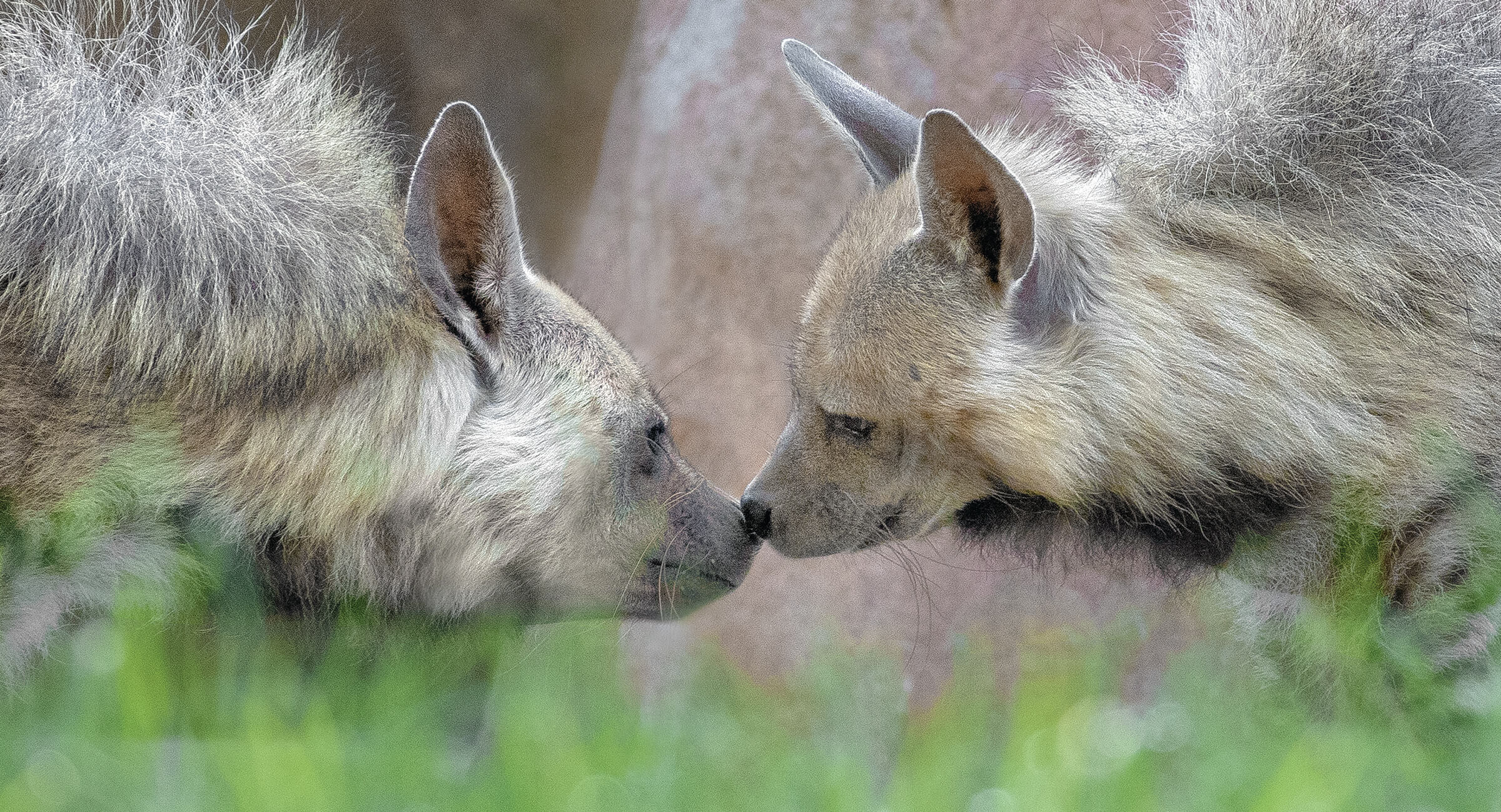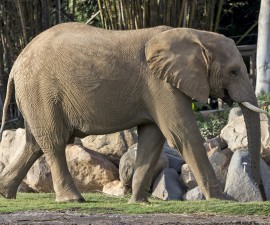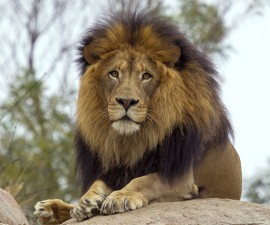BY Donna Parham
Photography by Ken Bohn
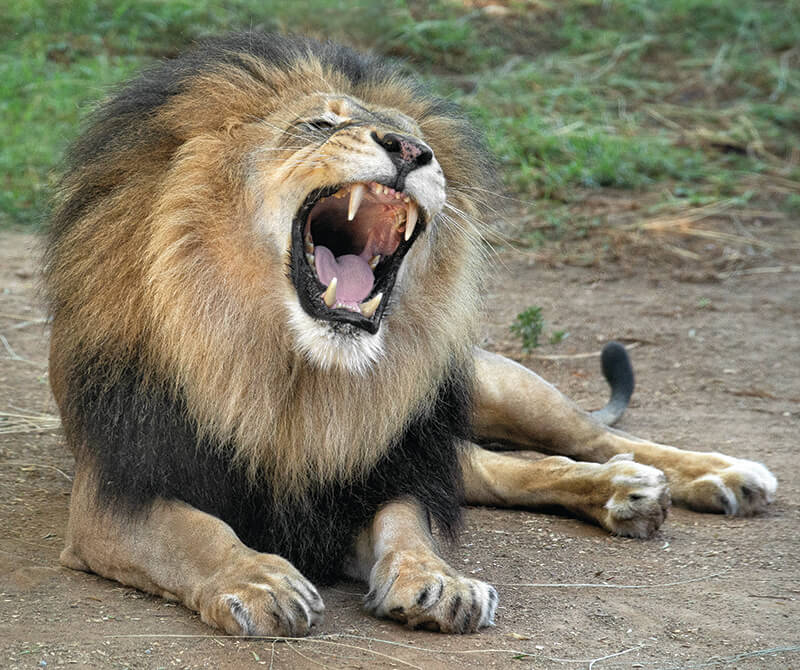
Ambassador animals since they were six months old, striped hyena brothers Tuli and Puru have delighted and educated thousands of visitors at the San Diego Zoo and Safari Park. Now 15, they are discovering different places and novel experiences, as they settle into their new home—a large, open-air habitat adjacent to the Safari Park’s Sylvia G. Straton Lion Camp.
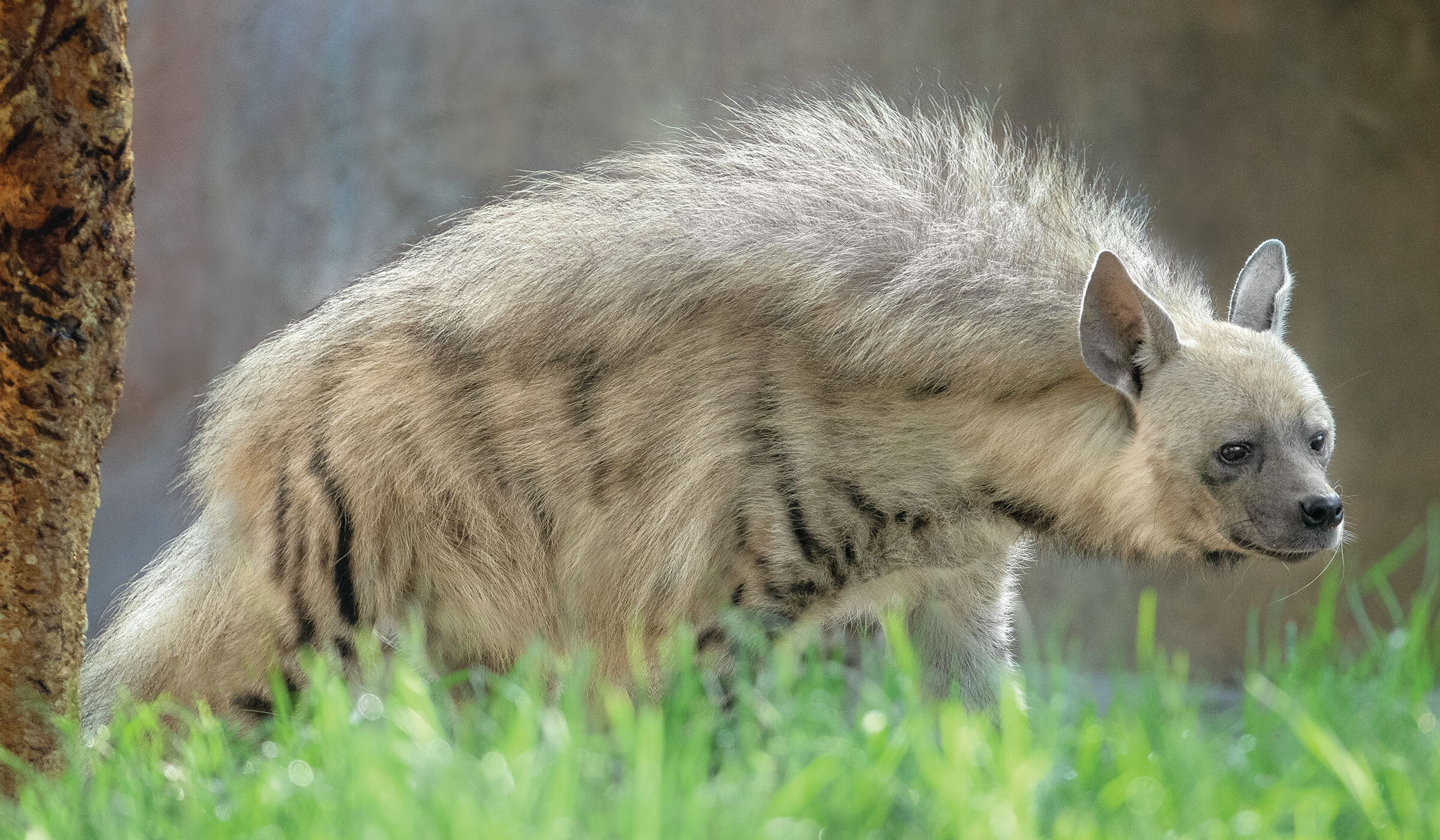
 Although there is a resemblance, hyenas are not dogs. In fact, these carnivores are more closely related to cats and mongooses.
Although there is a resemblance, hyenas are not dogs. In fact, these carnivores are more closely related to cats and mongooses.
It Takes a Team
Animal care specialists from both the animal behavior department—which cares for and interacts with the ambassador animals—and the Lion Camp team applied their expertise to make the transition positive and rewarding for the hyenas. Mary Weber-Evans, senior animal care specialist at the Safari Park, says that the first step was to familiarize the hyenas with their new caregivers and the scent of their new home. “Before the hyenas moved over here, we gave them some used lion bedding. At first, they didn’t seem to like the smell, but now they like to roll in it,” she says. During and after the move, animal behavior specialists participated in their care at the lion habitat, gradually lessening the amount of time they spent with the hyenas as the animals became more comfortable with their new caregivers. “We really worked together, and we had great teamwork between the two departments,” says Mary.
Along the way, Mary and the rest of the team at Lion Camp have had the opportunity to get to know the hyenas. “Tuli is more easygoing, and Puru is more cautious.” Mary says, comparing their behavior and personalities. “Tuli is curious, and he’s willing to explore.” Puru, on the other hand, “likes to think things through first,” she says. “You can see the wheels turning in his head, as he’s figuring out what’s going on.”
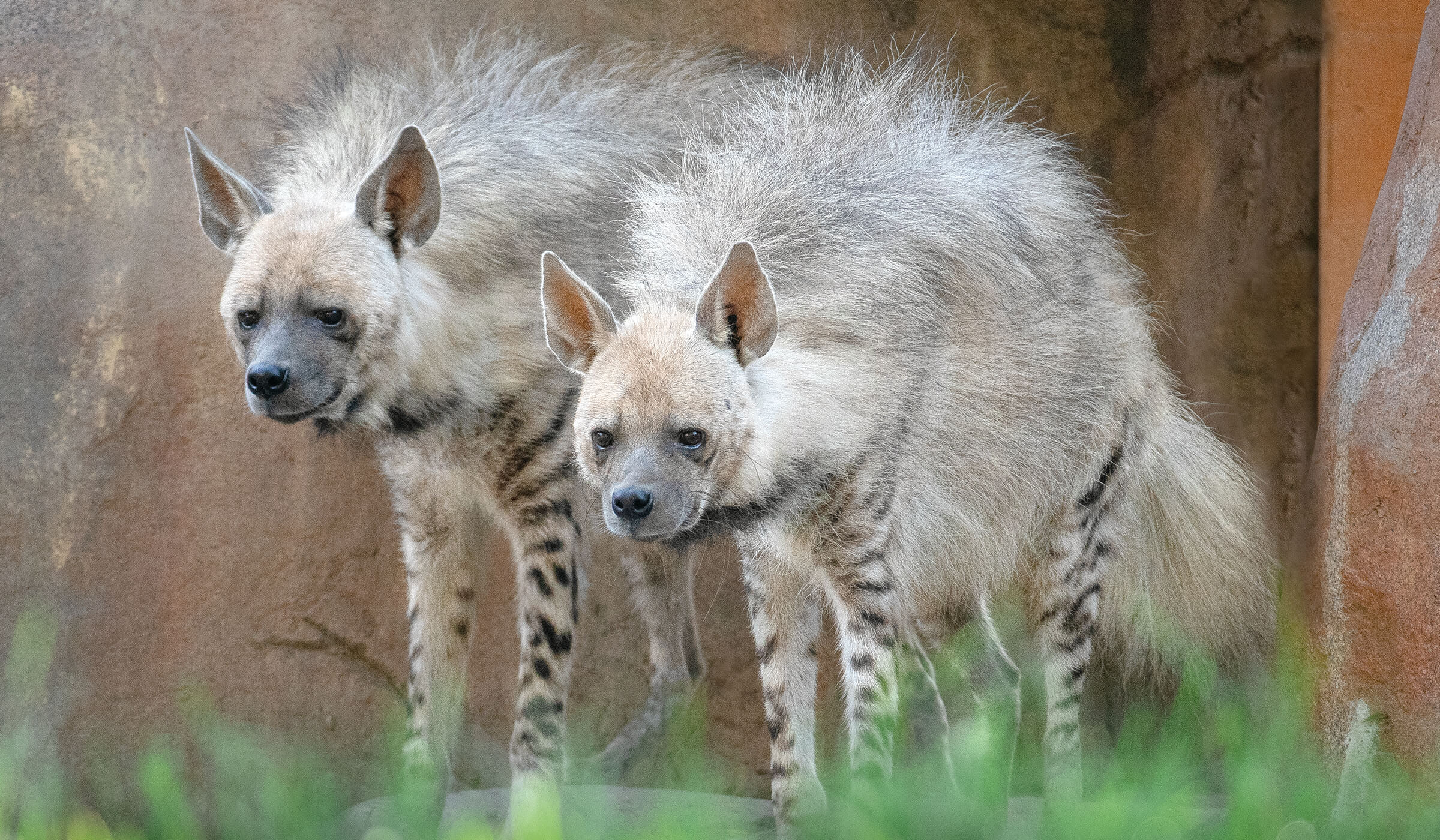
Novel Experiences Encourage Natural Behaviors
Puru and Tuli may no longer participate in the animal ambassador program, but their new habitat comes with different opportunities. “Mud and rain were new to them,” says Mary. And with less daytime activity surrounding their new home, she notes, “They’ve reverted back to being mostly nocturnal.” Video of their habitat shows that “starting around 11 p.m., they are up for three to six hours a night,” much like their counterparts in Africa.
Wildlife care specialists are focusing on enrichment experiences that provide opportunities for the hyenas to use their natural behaviors. Instead of interacting with people, the brothers are practicing their hyena skills as they explore their habitat, solve problems, and address challenges. Whole rabbits and cow femur bones encourage the kind of chewing and cracking that hyenas are known for—as do frozen blocks of chicken baby food, a hyena favorite. “They can crunch right through an ice block—that’s how strong their jaws are,” says Mary. “Today, we gave them live crayfish in a tray of water. The first time, they caught and ate the crayfish, but now they are catching them and rolling on them, which is another typical hyena behavior.” Elephant and rhino feces and leftover okapi browse provide enrichment, too—encouraging behaviors like sniffing, rolling, and scent marking.
To encourage and reinforce natural hyena behavior, animal care specialists present tidbits—like mealworms and bits of carrots, zucchini, apples, and melons—in unusual ways. Mealworms scattered throughout their habitat encourage the hyenas to forage. Carrots (or crayfish) in a tray of water encourage a different type of foraging behavior. Food items wrapped in a cardboard package or layered under paper in a box encourage yet another important hyena behavior: ripping stuff apart. “Enrichment is super important, because it stimulates their mind,” says Mary. “We can take one item and use it 10 different ways.”
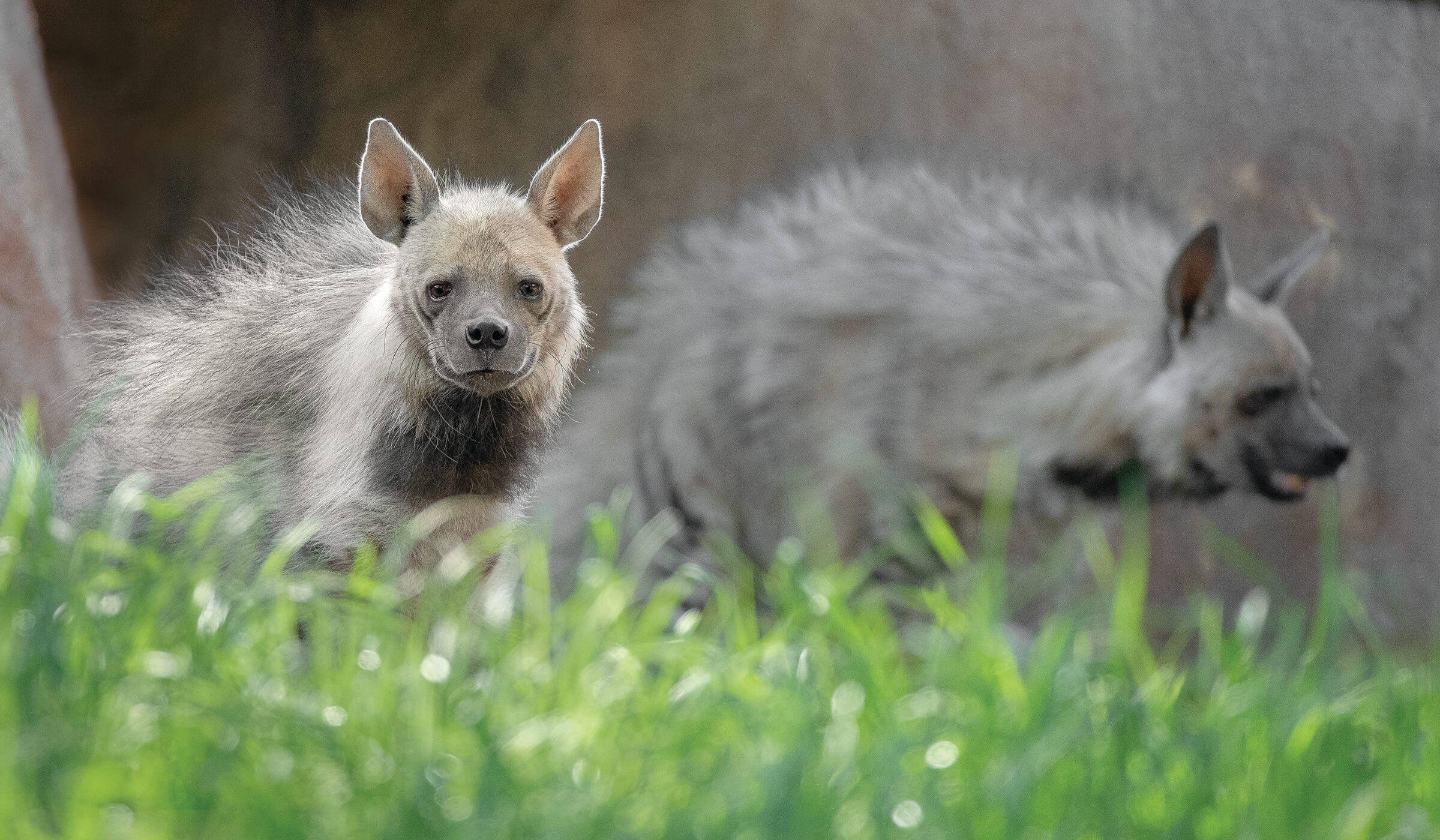
Exploring New Territory
Greg Vicino, head of Applied Animal Welfare for San Diego Zoo Global, spends a lot of time thinking about the opportunities, choices, and experiences we offer the wildlife in our care. “We find ourselves shifting away from traditional enrichment, toward developing meaningful experiences,” he says. “By creating a natural rhythm to their days, complete with problems to solve and challenges to overcome, we find the wildlife in our care develop skills more in line with their wild counterparts.”
That kind of thinking is what led wildlife care specialists to offer the hyenas the opportunity to investigate the expansive Lion Camp area. With the door between the lion’s vast outdoor territory and the hyenas’ area propped open (and the lions safely and contentedly tucked away in their indoor habitat) the brothers took their first uncertain steps into the Lion Camp habitat. “They didn’t go very far at first, but we expected that,” says Mary. Adventurous Tuli explored about halfway across the exhibit, but in keeping with his more circumspect personality, Puru took just a few cautious steps out onto the grassy lawn.
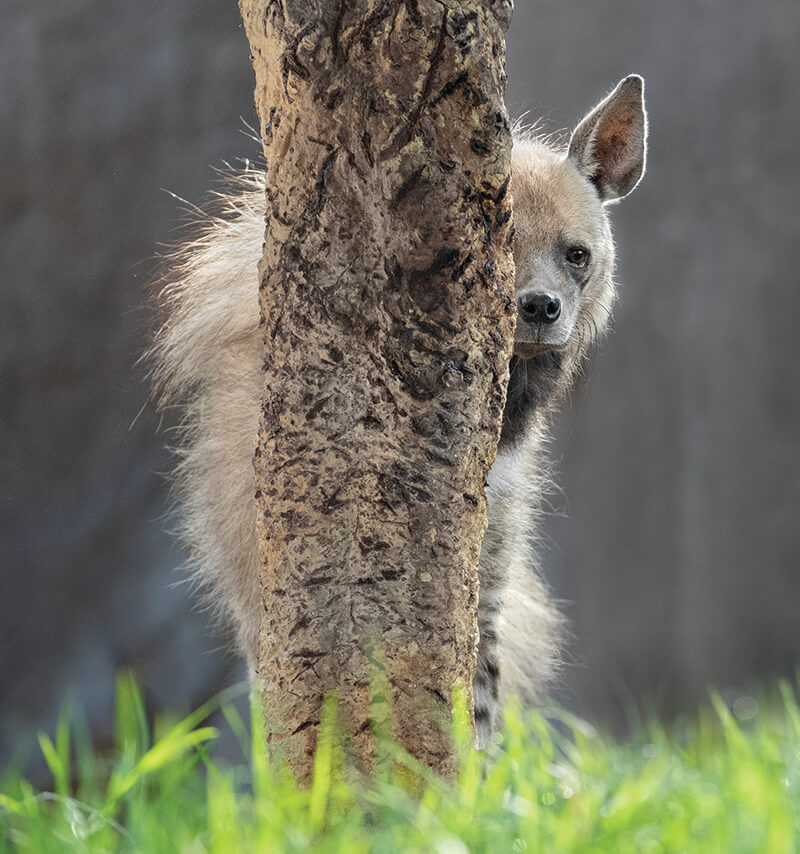
NEW SIGHTS–NEW SMELLS
The behavior of the hyenas in the expansive Lion Camp reveals their sharp distance vision. Also, “Their hearing is fantastic,” says Mary. At close distances, they use their noses to explore and forage.
Mary notes that one way to gauge how uncertain or comfortable a hyena is feeling is by how erect and fluffy its hair is. Piloerector muscles at the base of hair follicles cause a hyena’s long shaggy hair to stand on end, an adaptation for making the animal look larger and more intimidating when it feels alarmed or uncertain. “When Tuli and Puru first entered Lion Camp, their hair was ‘full-floof’—as big as it could possibly be,” she says. “They are already becoming more comfortable out there—their hair is more of a ‘half-floof,’ as we call it.” Mary notes that hyenas also piloerect when they are excited or curious—like when Tuli discovered lion feces. “To him, it was the grand prize,” says Mary. When Tuli proudly brought his prize “home,” Puru got excited about it, too.
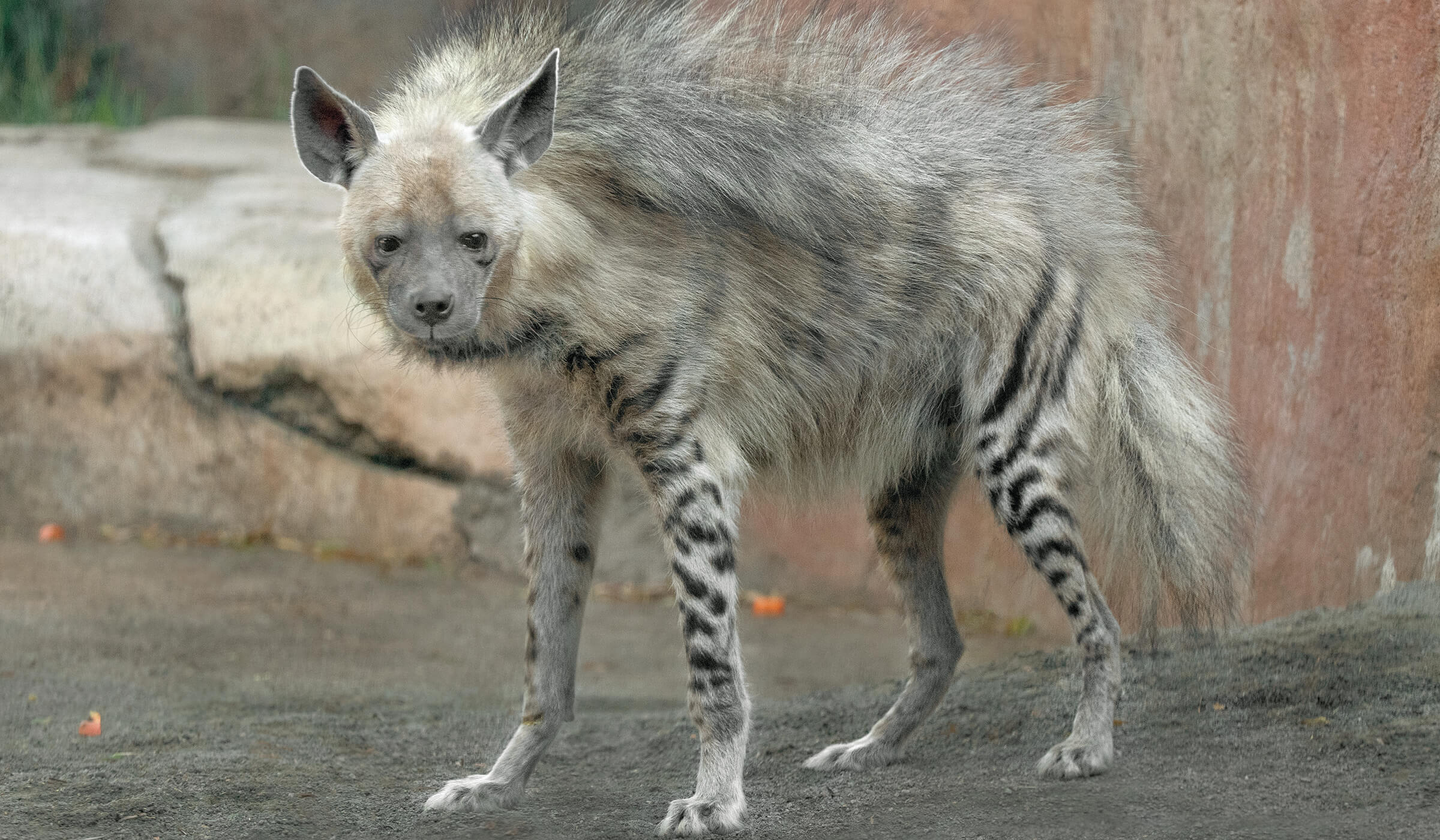
Big, Wide World
What’s next for the hyena brothers? “The animal care philosophy at the Zoo and Safari Park emphasizes the animals’ choice and control, so their behavior dictates to us what’s going to happen,” says Mary. She talks about what wildlife care specialists expect to see as the brothers get more comfortable in Lion Camp. “Eventually, we hope to see them both demonstrate curiosity, to explore the entire habitat, and to scent-mark there.”
Greg explains: “Our intention is to provide them with opportunities to express a complex behavioral repertoire, which allows them to be more responsible for seeking things they want and avoiding things they don’t.” For Tuli and Puru, that means the future likely holds opportunities for romping, foraging, and discovering the entire Lion Camp area, as well as nighttime access to the sprawling habitat and new experiences there. As Greg says, “By focusing on the natural patterns appropriate to Tuli and Puru, we’re seeing them become more skilled at navigating a rich, experience-filled world.”

